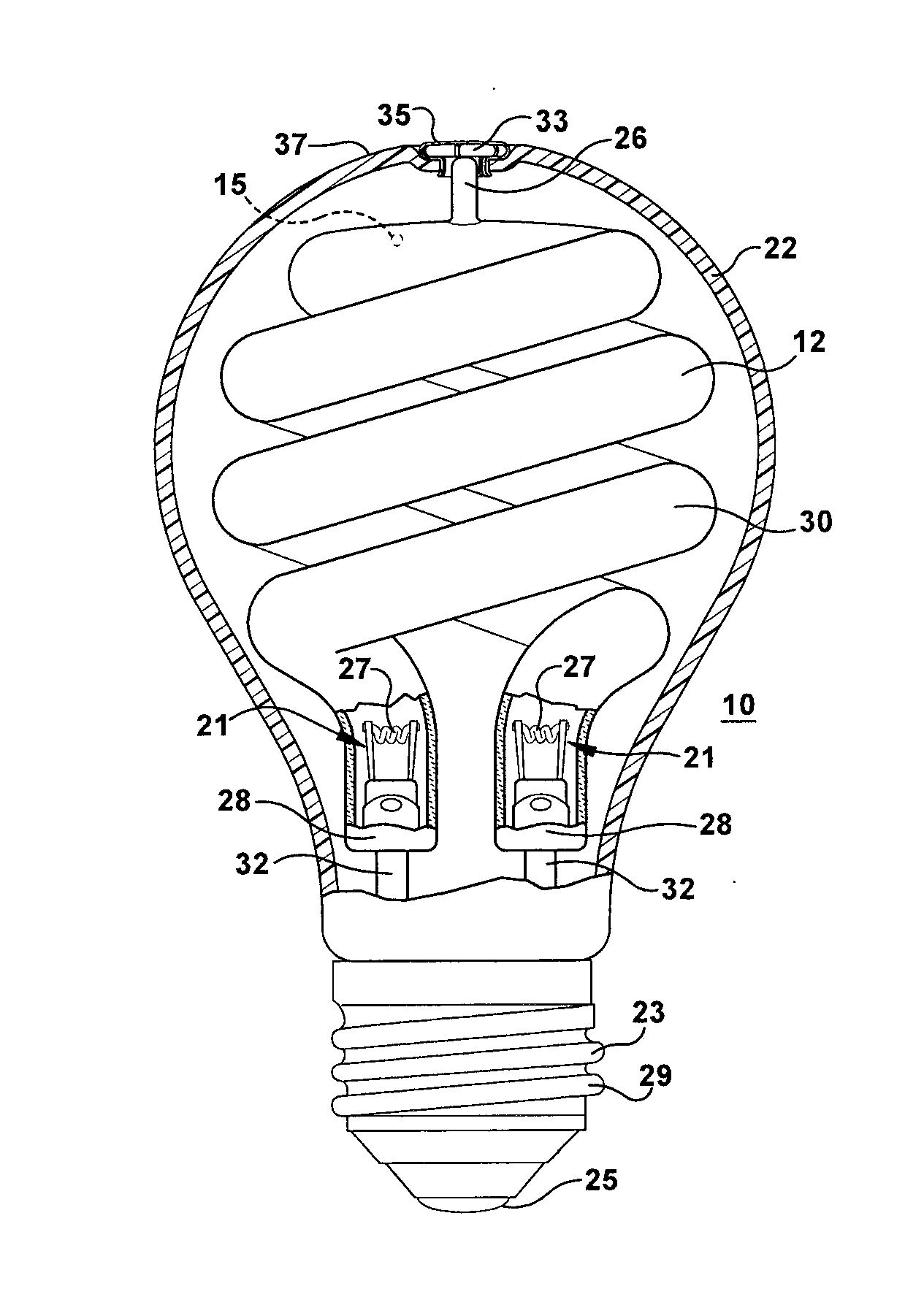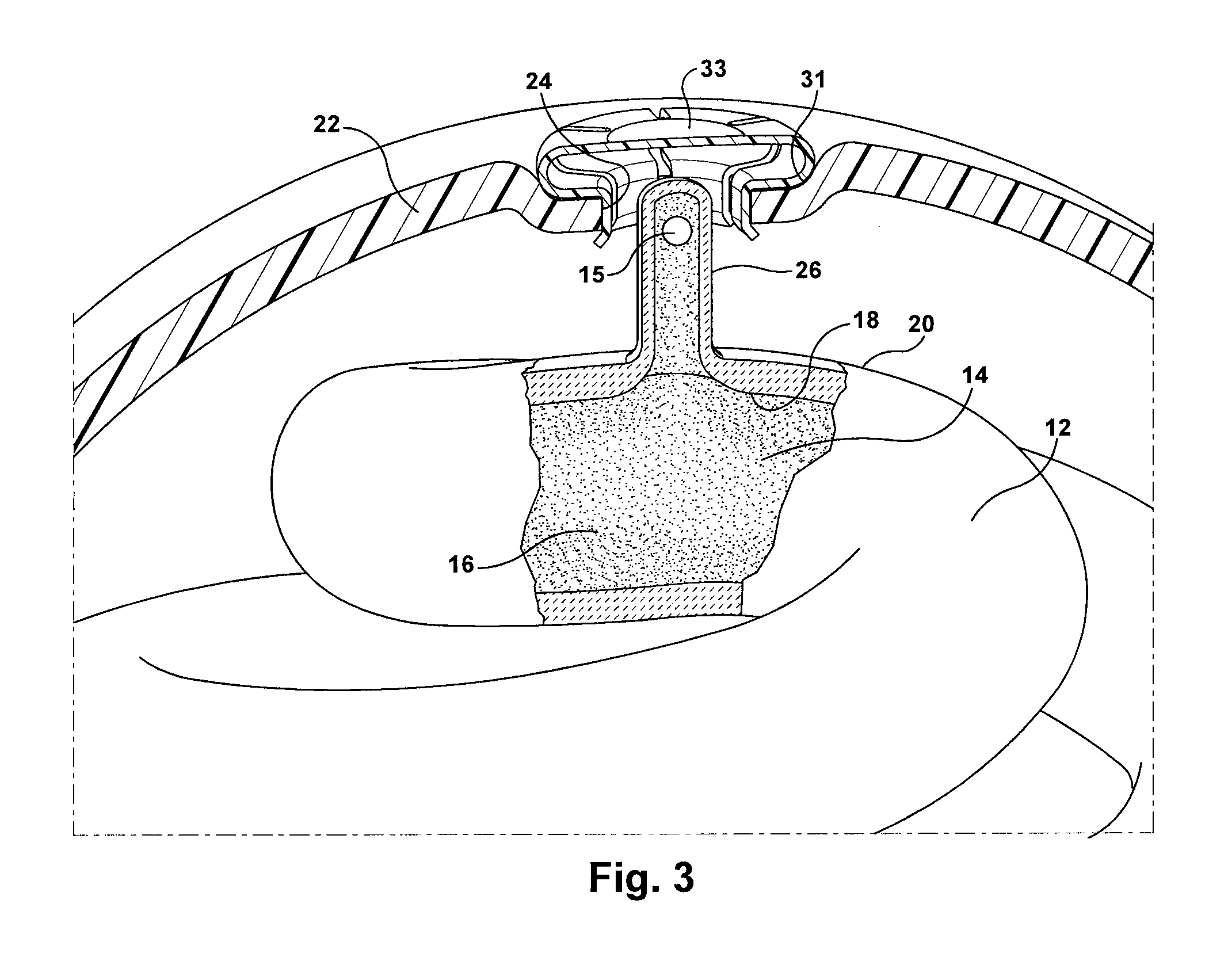Temperature control of arc tube of fluorescent lamp
a fluorescent lamp and temperature control technology, applied in the direction of discharge tube main electrodes, incadescent cooling arrangements, sustainable buildings, etc., can solve the problems of slow heating of the lamp, reduced efficiency and light output, and additional mercury vapor molecules interfering with uv radiation
- Summary
- Abstract
- Description
- Claims
- Application Information
AI Technical Summary
Benefits of technology
Problems solved by technology
Method used
Image
Examples
Embodiment Construction
[0020]A fluorescent lamp 10 includes an arc tube 12 comprised of light transmissive material such as glass. An electrical discharge sustaining fill 14 including mercury or a mercury substitute and an inert gas is sealed in the interior region 16 of the arc tube. A dose of mercury containing alloy can be contained in a pellet 15 that alone does not control mercury vapor pressure. The arc tube has an interior surface 18 and an exterior surface 20. The arc tube 12 interior wall 18 encloses a sealed volume of the interior region 16 or discharge chamber. Electrodes 21 include filaments 27 that are disposed in the sealed interior 16 of the arc tube. The electrodes in the arc tube are electrically connected in a known manner to external electrical contacts 23, 25 at the base 28 of the lamp (FIG. 2). A phosphor layer coats an inside surface of the arc tube (not shown). The lamp is a décor style lamp having an outer envelope or bulb 22 comprised of light transmissive material such as glass d...
PUM
 Login to view more
Login to view more Abstract
Description
Claims
Application Information
 Login to view more
Login to view more - R&D Engineer
- R&D Manager
- IP Professional
- Industry Leading Data Capabilities
- Powerful AI technology
- Patent DNA Extraction
Browse by: Latest US Patents, China's latest patents, Technical Efficacy Thesaurus, Application Domain, Technology Topic.
© 2024 PatSnap. All rights reserved.Legal|Privacy policy|Modern Slavery Act Transparency Statement|Sitemap



